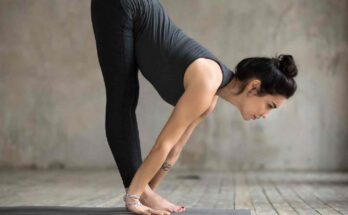The transition from summer to winter and the onset of festivities always lead to higher air pollution levels. People who suffer from asthma and other respiratory conditions especially face the burden of toxic air. Breathing under such conditions is thought to be hazardous to the body. Studies even say it may be equivalent to smoking 20 cigarettes every day! Yoga can help to prevent toxins from entering your body, and you can also do deep breathing exercises to increase lung capacity.
When the outdoor air quality is poor, practice breathing exercises to prevent pollutants from hurting your respiratory system.

Deep breathing exercises to beat air pollution
Here are three simple breathing exercises to combat the impacts of air pollution, as suggested by yoga expert Nisha Dhawan.
1. Anulom Vilom pranayam
The nadi shodhan pranayama is a breathing technique that helps clear the blocked channels. This technique is also known as Anulom Vilom pranayam. Regular practice for at least 10 minutes daily will help clear the blockages and is designed to purify the nadis or energy channels.
Also Read: Learn how to do Anulom Vilom here!
2. Kapalbhati
Kapalbhati is every yoga practitioner’s top choice. It helps to detoxify the entire system. For people suffering from breathlessness, this breathing technique can help clear out toxins from the lungs and brain. Kapalbhati increases the oxygen flow and improves digestion apart from cleaning the respiratory system.
Also Read: Know more about the benefits of Kapalbhati and how to do it!

3. Bhastrika
This breathing exercise – often called the breath of fire – aids detoxification and removes pollutants from the body. This technique helps in keeping the abdomen clear of toxins and boosts our immunity.
The best way to practise Bhastrika is to sit in vajrasana or sukhasana, the classic cross-legged position of yoga. Now make a fist and fold your arms placing them near your shoulders. Inhale as you raise your hands straight and open up your fists. Now exhale forcefully while bringing your arms back to your shoulders and close your firsts. Continue this for 20 repetitions at least. To end the session, relax.
The yoga expert recommends doing these three breathing exercises regularly in the morning or midday can help to reduce stress levels and clear out the toxins from the body.
What are the benefits of deep breathing exercises?
1. Detoxification
Breathing exercises aid in detoxification and provide you with energy. More air can flow in and out of your lungs so you can be more physically active.
2. Increase oxygen levels
Breathing exercises can help rid the lungs of accumulated stale air, increase oxygen levels, and get the diaphragm to return to its job. When you have healthy lungs, breathing is natural and easy.
3. Improve lung capacity
Breathing exercises can potentially help maintain or increase lung capacity in those without underlying lung conditions.
4. Lead to relaxation
Deep breathing exercises can also stimulate the parasympathetic nervous system, which promotes relaxation and aids in digestion.
Can deep breathing exercises be done by everyone?
Breathing exercises can be beneficial for all age groups including kids, adults and elderly people. Those with breathing issues or health conditions such as cardiac arrhythmia, slow heart rate, high blood pressure, angina or chest pain and heart diseases – should be cautious and seek guidance before beginning any breathwork practice. Children below the age of 5 shouldn’t indulge in complicated breathing techniques such as Kapalbhati or hold their breath while performing Pranayama for prolonged periods, unlike adults. All breathing exercises should be performed under the guidance of a professional.
Yoga expert Nisha Dhawan says it is crucial to remember that some breathing exercises may not be appropriate for everyone, particularly those with specific medical issues. Before beginning any new breathing exercises, please consult your doctor.
Source link




